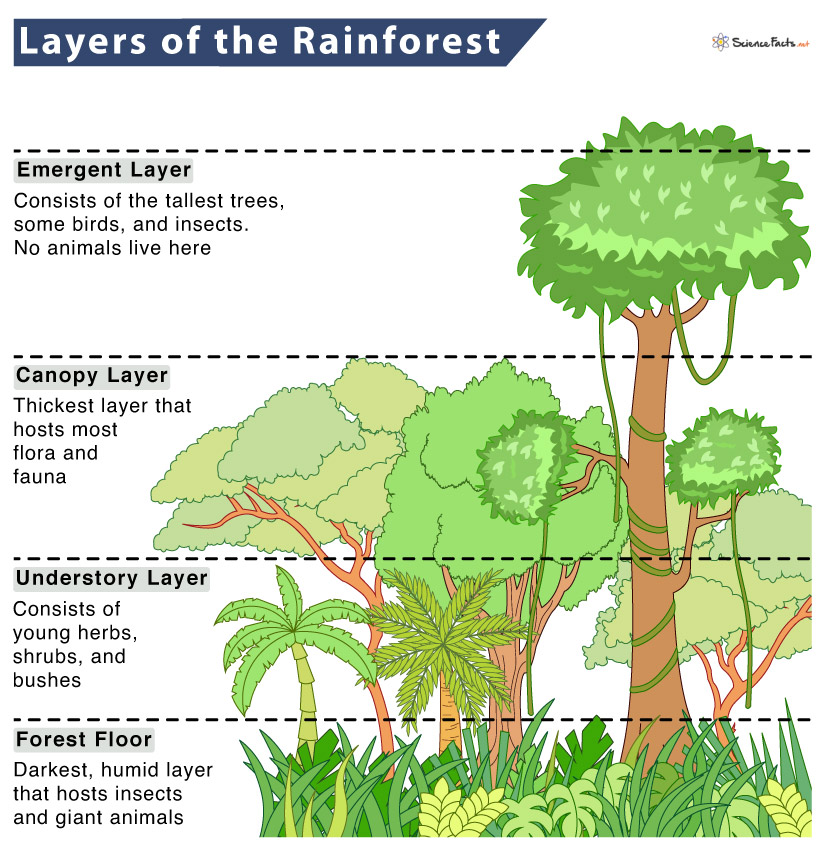How many Layers are there in a Tropical Rainforest
1. Emergent Layer
It is the first layer of the tropical rainforest from the top, starting over 45m from the ground. The emergent layer consists of long, towering trees of 70-100m. Those trees are taller than most other trees in a forest. The emergent layer is hot (because of direct sunlight), breezy, and wet making it a rather inhospitable place to live. It is thus not a suitable place for animals to survive.
Animals in Emergent Layer
2. Canopy Layer
The canopy layer is the next layer below the emergent layer, about 30 – 45 meters (100 to 150 feet) above the ground. This layer is the host to the majority (almost 60-90%) of all the living species in the rainforest. The photosynthesis rate is highest in this plant’s leaves, which act as a mini-solar panel. The canopy layer is also essential for maintaining the climate, protecting the forest floor from the sun’s intense heat, floods, and dry winds, thus retaining moisture. This layer contains overlapping trees such as Lianas – rainforest vines that serve as the floor for the other animals living there. In addition, epiphytes are growing on the branches of trees and other plants, allowing animals to climb along.
Animals in Canopy Layer
Due to overlapping trees, organisms within the same species cannot see each other and thus use signals to relay and communicate.
3. Understory Layer
This layer is so named because it lies below the emergent and the canopy layer. The understory layer is humid, and damper than the top two layers since sunlight hardly reaches here (about 5%). However, the high humidity helps animals to remain alive. The understory layer consists of shrubs, herbaceous plants, ferns, climbing plants, and young trees that can adapt well in regions receiving less sunlight. The leaves of such plants are large, which helps to increase the chance of capturing whatever sunlight reaches this layer. The tree trunks vary in shape and size and also differ in color due to the presence of mosses, lichens, and fungi attached to the trees’ trunks and branches.
Animals in Understory Layer
4. Forest Floor
This layer is the last and the fourth in the rainforest. The forest layer is the darkest and the most humid layer receiving less than 2% of the total sunlight. This layer consists of fallen leaves, twigs, branches, fruits, and seeds from the three layers above it. All these materials, along with moisture and humidity, allow quick decomposition. The presence of soil bacteria and fungi also helps in decomposition. However, the soil of the forest floor is not rich in nutrients, for plants have adaptations such as spread-out roots to accumulate nutrients. Because of its low level, this layer is the first to be explored and probably the most well-studied.
Animals on Forest Floor
This layer is where giant terrestrial animals, such as elephants, leopards, gorillas, tapirs, hippos, jaguars, and tigers, are found. Insects like leafcutter ants are common in the amazon rainforests. They live in colonies of over a million insects and grow their food. Amphibians like poison dart frogs are also common in this layer.
